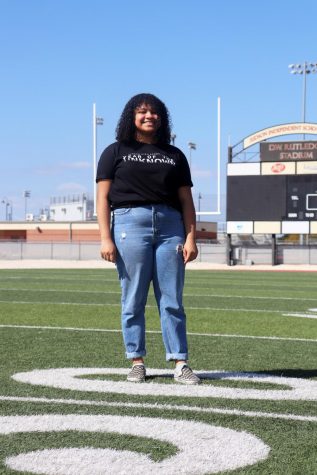Review: Taylor Swift’s “Evermore”
On December 11, singer and song-writer Taylor Swift surprised fans and released her ninth studio album titled Evermore. Just five months after the release of Folklore, she delivers another 15 songs that create a specific tone throughout. While the album does create a more immersive and adventurous-sounding experience, some of the songs can sound similar to each other. However, this is still an example of how talented Swift can be, especially considering the COVID-19 pandemic and the release of two full-length albums.
The first track on the album, Willow, introduces that adventurous-sounding vibe. It starts out with a guitar melody, which will become a motif, and her quiet vocals are added in just seconds later. It seems as though she is speaking to someone, and can be thought of as a love song, especially with the lines, “I’m begging for you to take my hand // Wreck my plans // That’s my man.”
The song titled Champagne Problems follows as the second piece and it is a ballad that begins with a simple piano melody. It sounds familiar, but still introduces some amount of uniqueness, especially in contrast to the guitar-dominating piece that is Willow. The addition of the guitar, however, adds that sense of immersion. This song fits very well with the general tone and mood of the album, as a subdued, quiet, and lyric-involved piece. This also acts as a love song in some sense, when she sings, “Your mom’s ring in your pocket // My picture in your wallet // Your heart was glass, I dropped it // Champagne problems.”
Gold Rush, a personal favorite of mine and the third song, introduces a very contrasting idea to the album. The beginning sounds interesting, especially when considering the more quiet and calming sounds of the last two songs. She speaks about her distaste for others finding the person she is speaking to attractive. She sings, “I don’t like that anyone would die to feel your touch // Everybody wants you // Everybody wonders what it would be like to love you.” The chorus, specifically with the layered and added vocals, is a prime example of how immersive this album can be at certain points. In the last twenty seconds of the song, she sings, “Gleaming // Twinkling // Eyes like sinking // Ships on waters // So inviting // I almost jump in.” With the more breathless sounding vocals, this also adds another immersion point and acts as a pleasing callback to the beginning of the song.
The seventh song, Happiness, begins with a quiet and calm synth sound. The synth background sounds very appealing, especially considering its simplicity with the more quiet vocals that Swift is adding. The melody eventually escalates slightly, and piano is added which creates an audibly interesting and enticing piece. With the shift in the synth beat, the tone changes slightly, and there is the addition of the guitar. Swift sings about a post-relationship experience. She sings, “There’ll be happiness after you / But there was happiness because of you,” as well as, “Haunted by the look in my eyes // That would’ve loved you for a lifetime.”
Ivy, the 10th song, sounds quite similar to the first two songs, especially to Willow with the predominantly guitar instrumental. The rise in vocals adds a nice-sounding piece. Swift sings about an affair, especially shown when she says, “He’s in the room // Your opal eyes are all I wish to see // He wants what’s only yours.” The guitar, paired with an occasional violin melody, creates the vibes of a country, or folk, song which does fit the themes of the album.
The 15th and final song, titled Evermore, featuring Bon Iver, begins with another simple and repeating piano melody. Swift sings, seemingly, about her pain and her regret, especially when she sings, “Gray November // I’ve been down since July,” and, “I replay my footsteps on each stepping stone // Trying to find the one where I went wrong.” The addition of Justin Vernon adds a bit of complexity but still keeps to the themes and tone of the album. The callback during the bridge sounds very appealing and interesting, as well. There is, then, a sudden shift from the greater and louder callback to the quieter and calmer piano melody that was introduced at the start.
In general, this album sounds immersive and can act as a source of comfort for some. Although it may sound a bit repetitive at some points, the high points of the album make up for it. Despite it not necessarily appealing too heavily to me, it still shows as an example of how complex Swift’s works can be, and how diverse her discography is becoming.
—-
If there are issues with this article, report it here.

